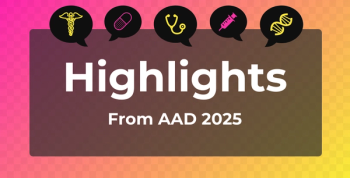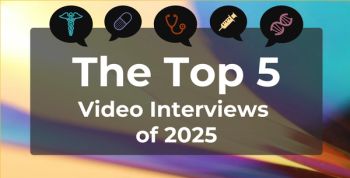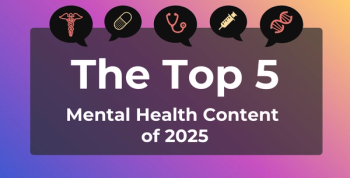
New Tools Aim to Close Lung Cancer Screening Gap: Raymond Osarogiagbon, MD
Raymond Osarogiagbon, MD, discusses innovative strategies for improving lung cancer screening, including artificial intelligence (AI) tools and simplified eligibility criteria.
In the final interview clip with Raymond Osarogiagbon, MD, director of the multidisciplinary thoracic oncology program at Baptist Cancer Center, recorded at the
Watch parts
This transcript has been lightly edited; captions were auto-generated.
Transcript
Looking ahead, are there any promising innovations, such as emerging technologies or policy efforts, that could help close the lung cancer screening gap?
As far as closing the screening gap, we know that this is a huge opportunity. [As] you can imagine, there's a lot of effort, time, [and] energy devoted to trying to find a way to innovate our way out of our current dilemma, right?
There are several really exciting things. I mentioned the development of a HEDIS [Healthcare Effectiveness Data and Information Set] measure, which is what institutions and primary care providers use to really encourage them, to incentivize them to participate in screening. One of the key things that we need to do is develop a HEDIS measure that allows insurers to benchmark the quality of care that primary care providers and institutions [provide] by incorporating a measure for lung cancer screening. So, that's one in progress.
One of the other things that we're working really hard to do is to simplify the eligibility criteria. One of the knocks on lung cancer screening, as it currently is, is that the criteria are just a little bit too complicated. Unlike breast cancer, cervical cancer, or colon cancer, where the simple question is, how old are you? If you're old enough, yes, go get screened. With lung cancer, it's not just how old are you? It's, do you smoke? Are you still smoking? How long ago did you quit? How much did you smoke? It's just a lot.
One of the things that's happened is the American Cancer Society has suggested that this question, "How long ago did you quit?" We should just do away with it because even people who quit more than 15 years ago, clearly, continue to see their lung cancer risk rise. That's one.
Another is this idea of a pack-year history, which is a little bit of a complicated thing to calculate. There's emerging evidence that we could actually simplify that. Just make it, "Have you smoked for up to 20 years?" instead of trying to figure out this pack-year thing.
Those are 2 examples, but the really exciting innovation has to do with technology. AI [artificial intelligence] is a big buzzword right now. Well, it turns out AI is one of the big opportunities we have. There are lots of different people working on artificial intelligence, ways to augment the CT scan, which is the screening tool, to make it a much more efficient method.
One of the most exciting ones is something called Sybil. Sybil is an AI algorithm that was developed by a professor of computer science at MIT [Massachusetts Institute of Technology], Regina Barzilay. We have a Sybil implementation consortium, consisting of MIT, Mass General Brigham, my institution, the Baptist Memorial Healthcare Corporation, the University of Illinois in Chicago, and WellStar, which is a large community based health care system in Atlanta. We've come together to really accelerate the development of Sybil within a very diverse population in the United States. That's another really exciting area of innovation.
I know there are lots of others who are working on AI. There is a French company, Median Technologies, that is actually close to submitting something to the FDA. Their own algorithm, which has been rigorously tested, [is] probably going to come to the market pretty soon. [There are] lots of other innovations like that using artificial intelligence.
Then, the third really exciting part is the idea of biomarkers. Using biomarkers to identify people who are at risk for lung cancer, getting them to go get screened, that's one approach some companies have taken. Another is those who have had a screening test who have a lung nodule, developing biomarkers that allow you to figure out which nodule is really lung cancer, which is the minority, vs which one is benign. We really don't want to get into the business of doing stuff for benign lung nodules.
Biomarker testing and artificial intelligence are 2 technological innovations that are just around the corner that promise to help us simplify the process, make it more cost-efficient, safer, and hopefully much easier to deploy across a broad population.
Newsletter
Stay ahead of policy, cost, and value—subscribe to AJMC for expert insights at the intersection of clinical care and health economics.







































